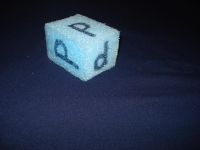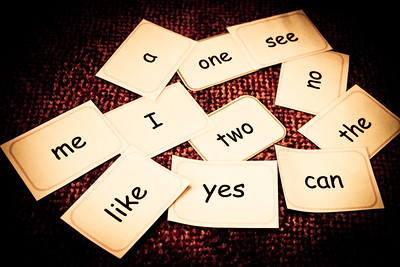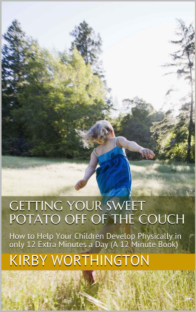As mentioned before, Kirby believes that teaching sight words and phonetics together is the best way to set kids up for a future of reading well. In this post, we'll cover some sight word games to play and the words to use when making these games.
When making your own sight word cards, it is important for us to start by mentioning that young eyes need the sight words written very largely (1-2 inches high). The muscles of young eyes are learning how to focus on things. Another helpful tip is to write mainly in lower case letters on pieces of cardboard or another sturdy card paper.
In choosing which words to begin with, use the names of family members including the child's name with upper and lower case letters. Write the child's name, then Mama (use upper and lower case m with Mama to make it easier), and the names of others who are around a lot. Once these are written on a card, lay them out on the table and pick them up several times throughout the day and say the word that is on the card. Depending on the child's level of interest, this will take varying amounts of time to stick with them- they will learn in their own time. This is a no-pressure, fun way to learn. Eventually, they will say the word before you when they see which one you are about to pick up and then you'll know they have it. This is when you add a new word to the table, keeping the first word in the mix, and so on.
The first step in pre-reading is reading to your child as they grow inside and can hear what your saying, the rhythms and sounds of reading. When they are born, start naming whatever they are looking at (get other people to do this too). Name whatever they hold...if it's a rattle, name it but if they shake it, say "shake".
Once the child learns the sounds to make their own "sound language" treat those as real words. For example, in giving the child the choice of milk or juice to drink, pronounce each option very correctly then if they respond with "mmmm" say, "You want milk." You will know if this is not what they want as they will show you with their unhappiness. At that point you can respond with, "Oh you want juice." This is real talking for them at this stage.
A lot of children learn the alphabet song while having no idea what the letters look or sound like. There are games that can introduce children to these shapes and sounds. When playing matching games to learn letters, use no more than three different letters as a start (and use three letters that look very different from one another, ie ABC). One game that is very basic and fun for the child is Alphabet Hotel. To make this game, begin by writing on large, colored cards the three letters you will be using. Then take a piece of cardboard and make pockets that the three cards will be able to fit into, labelling these pockets with the same letters (be sure to make the letters the same size as on the cards). Play begins with hiding the cards (make as many sets of these letters as there will be children playing - one set per child) then telling the story of the Alphabet Hotel...how Mr. A, Mrs. B, and Ms. C are lost. They have gone missing, and what's more, they cannot find their room! The child will search for the cards and locate which room they belong in (their match) on the board by sliding the letter card into its corresponding pocket. When playing this game be very encouraging with excitement proclaiming: "Oh you found Mrs. B! Can you put her in her room?"




